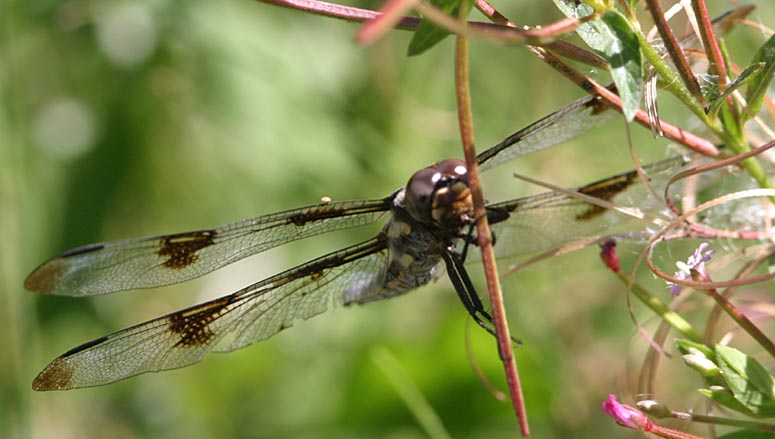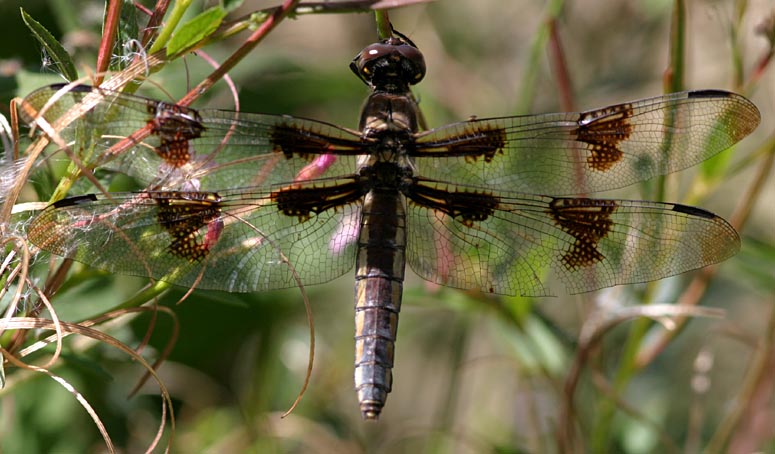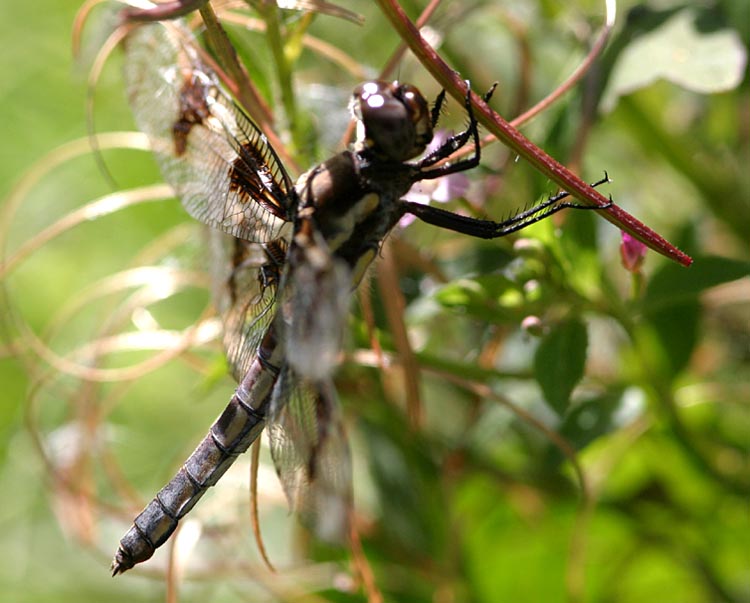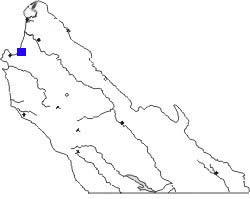| |
|
|
TWELVE-SPOTTED SKIMMER
Libellula
pulchella
|
| To date there is only one MTY record of Twelve-spotted
Skimmer:
19 Sep 2006 at Laguna Grande Park in Seaside. It was discovered by Don
Roberson, who had been there the day before and on several days
thereafter,
but it had not been present on 18 Sep nor was it refound afterwards. It
is probably best considered a vagrant at this point, but it would also
not be surprising if it proved to be regular in the county.
All the photos (below) were taken on 19 Sep
2006. The skimmer was obviously
old and worn. The distal spots on the wings are very faded, and the
wings
themselves beat up and ragged. Including the faded wing-tip spots,
there
are 12 spots (basal, nodus, tips of each of four wings). The spots are
the base of each wing and the middle spots are comparatively similar in
extent, a pattern shown on many photos of Twelve-spotted, rather than
the
smaller basal spots and larger middle spots more typically shown on
female
Common Whitetail Plathemis lydia. Common Whitetail has a
different
abdominal pattern as well.
|
|

|

|
| The wings were very clear except for the
spots (above), and the abdomen
was brown, but an oddity was the presence of apparent pruinescence on
the
distal half of the abdomen. This could suggest a male. The terminal
appendages
(see close-up, below) show that this was a female. |
|

|

|
| Using Manolis (2003) as a primary guide,
but also reviewing the photos
and scans on Kathy Biggs's and Dennis Paulson's web sites, the
abdominal
pattern are consistent with Twelve-spotted Skimmer: composed of yellow
stripes, not dashes or spot, with the pale yellow stripe covering each
segment from front to back, broken only by the segmentation of the
abdomen.
Also, the two thoracic stripes are pale yellow, with deeper yellow at
the
anterior ends, but without a small yellow dot in front and below the
anterior
stripe, as is shown on photos and scans of female Common Whitetail.
There was some on-line discussion of these
photos regarding Eight-spotted
Skimmer and/or hybrids, but nothing about this ode suggests
hybridization.
Tim Manolis (in litt.) stated that faded distal wing spots is not
atypical
in Twelve-spotted Skimmer.
|
 The
map (right) shows the only locale so far for this species. It is a
common
species across much of North America. In California, its range includes
the top 2/3ds of the State, and coastal southern California (Manolis
2003). The
map (right) shows the only locale so far for this species. It is a
common
species across much of North America. In California, its range includes
the top 2/3ds of the State, and coastal southern California (Manolis
2003).
Walt Koenig, the PhD research biologists at
Hastings Natural History
Reservation who studied the ecology of Common Whitetail in depth in the
1980s, tells me that he saw an occasional "Ten-Spot" back then.
"Ten-Spot"
is an old name for Libellula pulchella. So it is very
likely
that this ode has occurred in MTY before, and possibly regularly.
The only date for MTY is 19 Sep 2006, but
elsewhere in California it
flies April-October (Manolis 2003), with a peak in mid-summer.
Widespread
wandering is known.
|
|
|
Literature cited:
- Manolis, T. 2003. Dragonflies and Damselflies of
California. Univ. of
Calif.
Press, Berkeley.
Web resources:
Major identification web sites with much information on California
odes include:
For sites with excellent photos to compare for identification or to
simply
enjoy, see:
Many of these sites have links to other useful pages. Kathy Biggs's
site
is particularly useful in her selection of links. |
|
All photos © Don Roberson 2007
TOP
|
|
|
Page created 19 Sep 2006,
updated 7 Nov 2006
|
|
|
|
|
